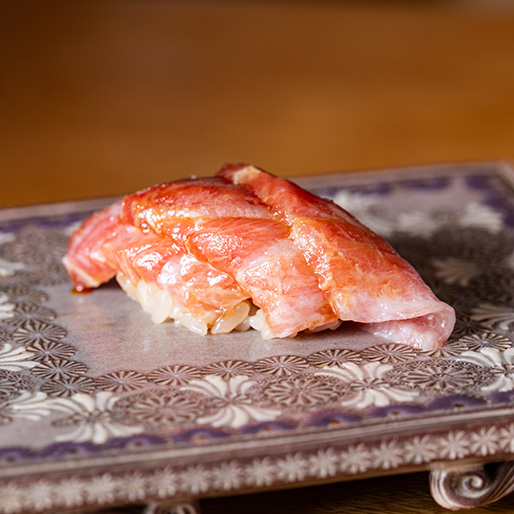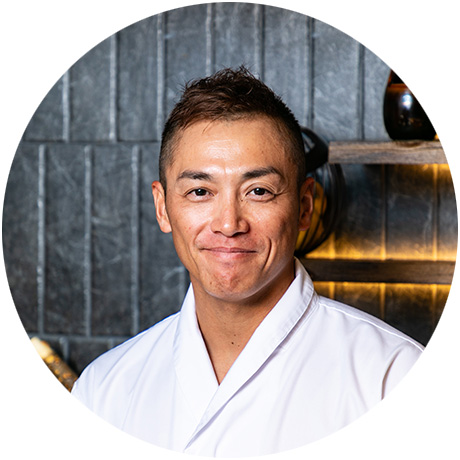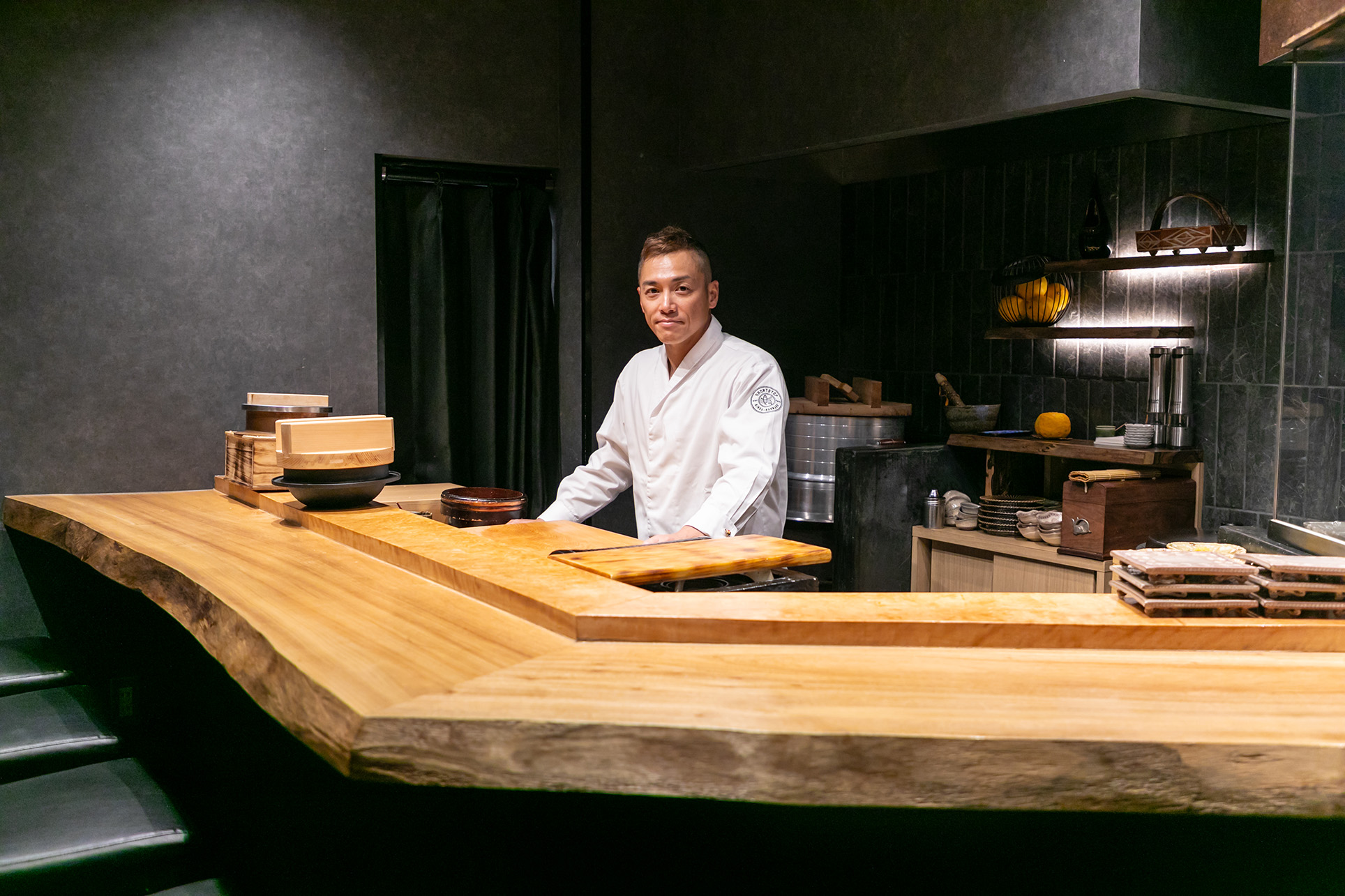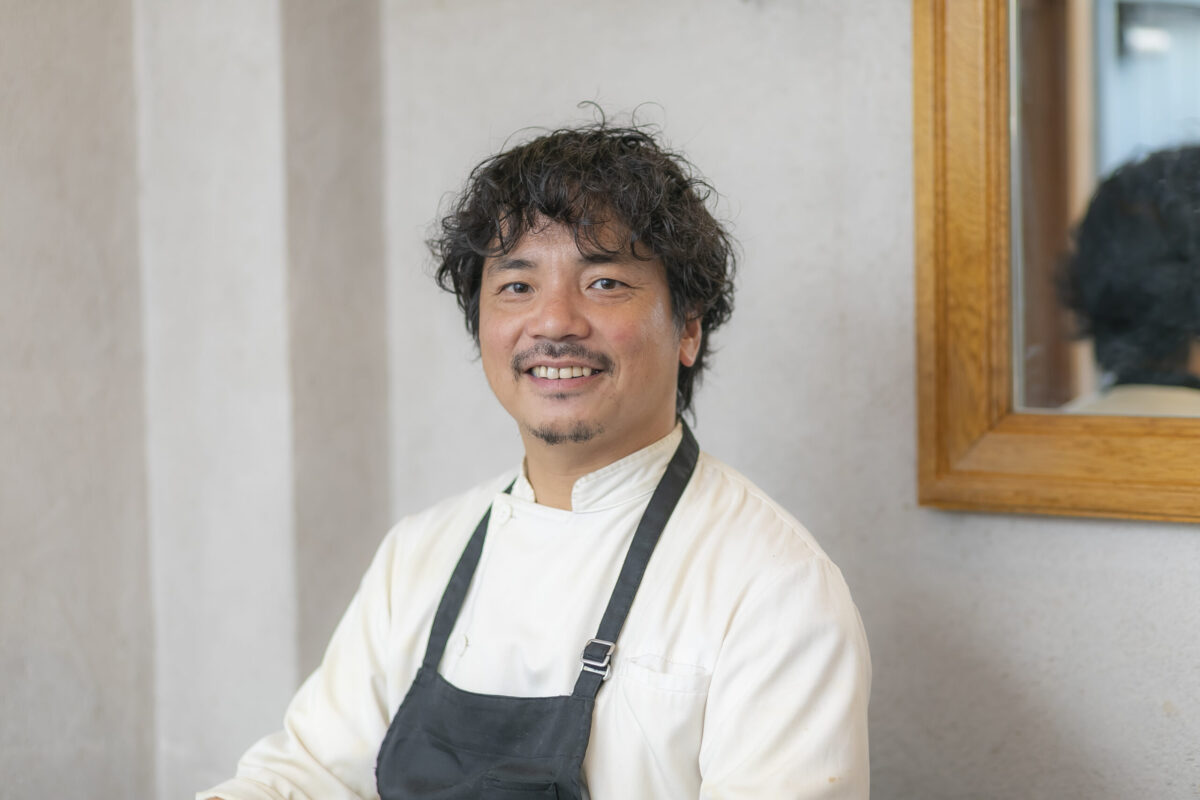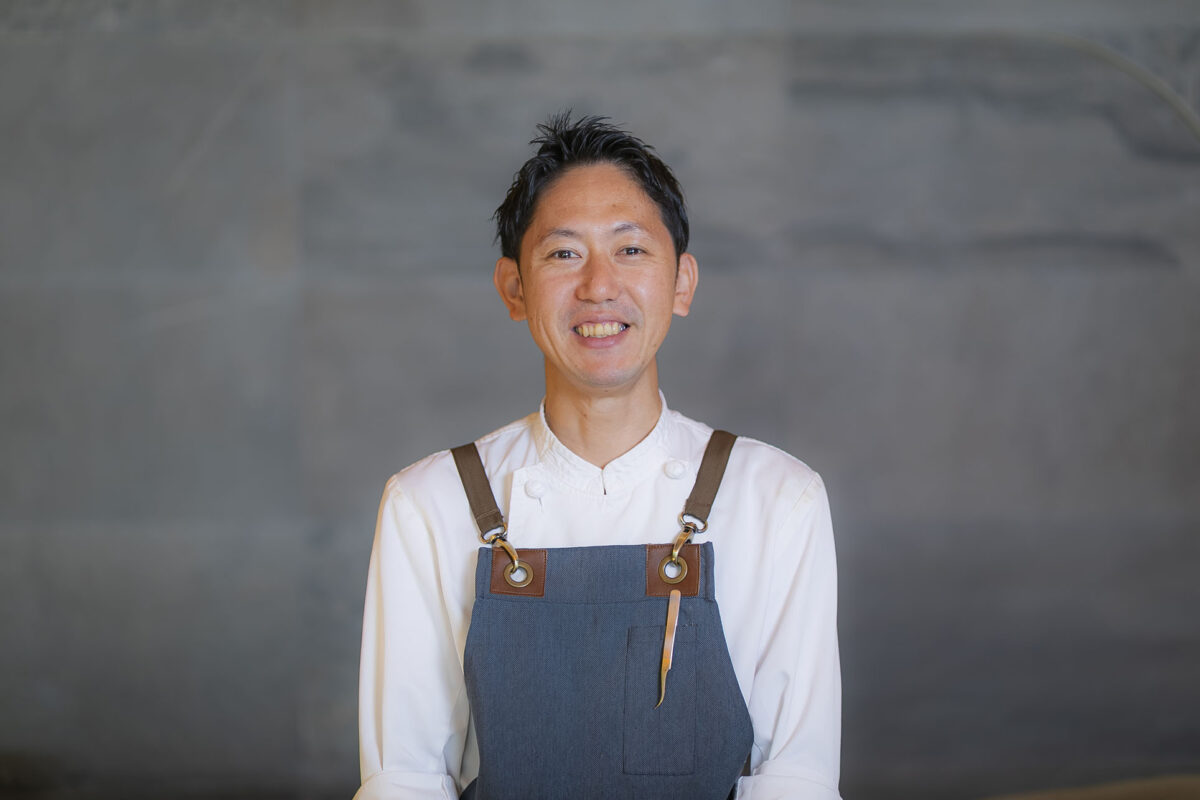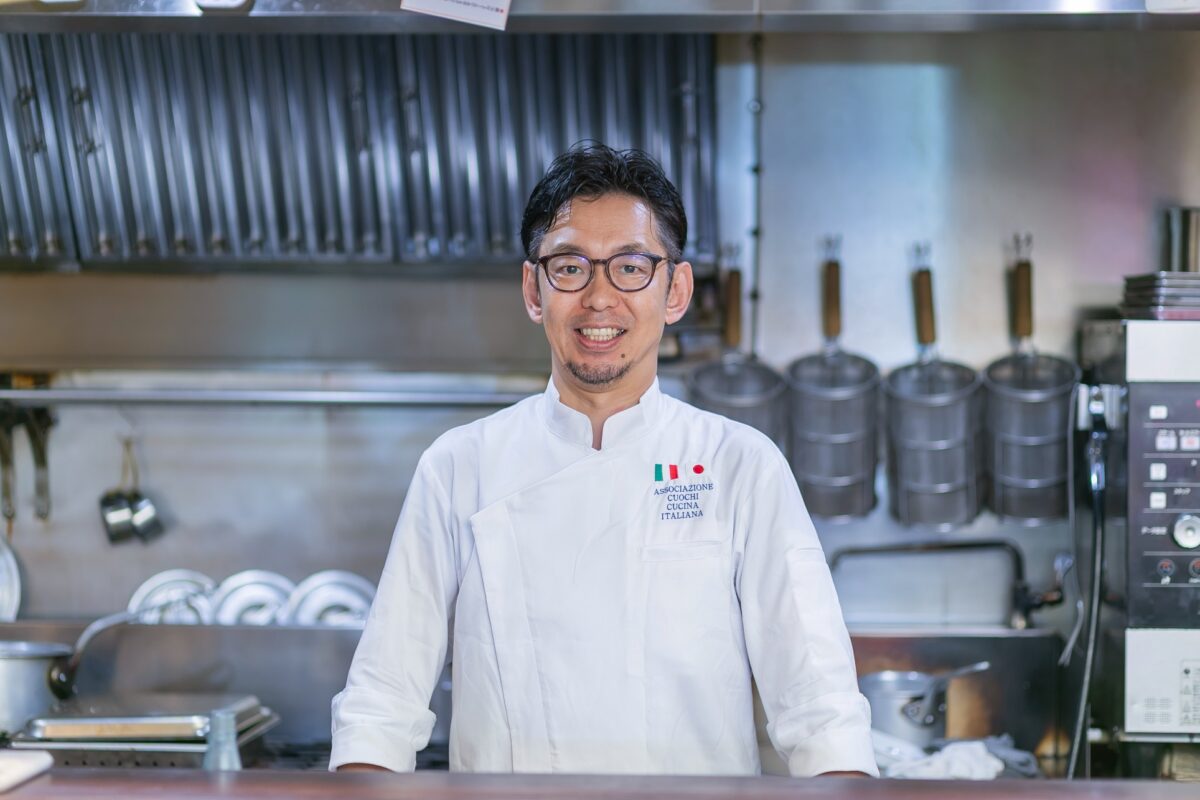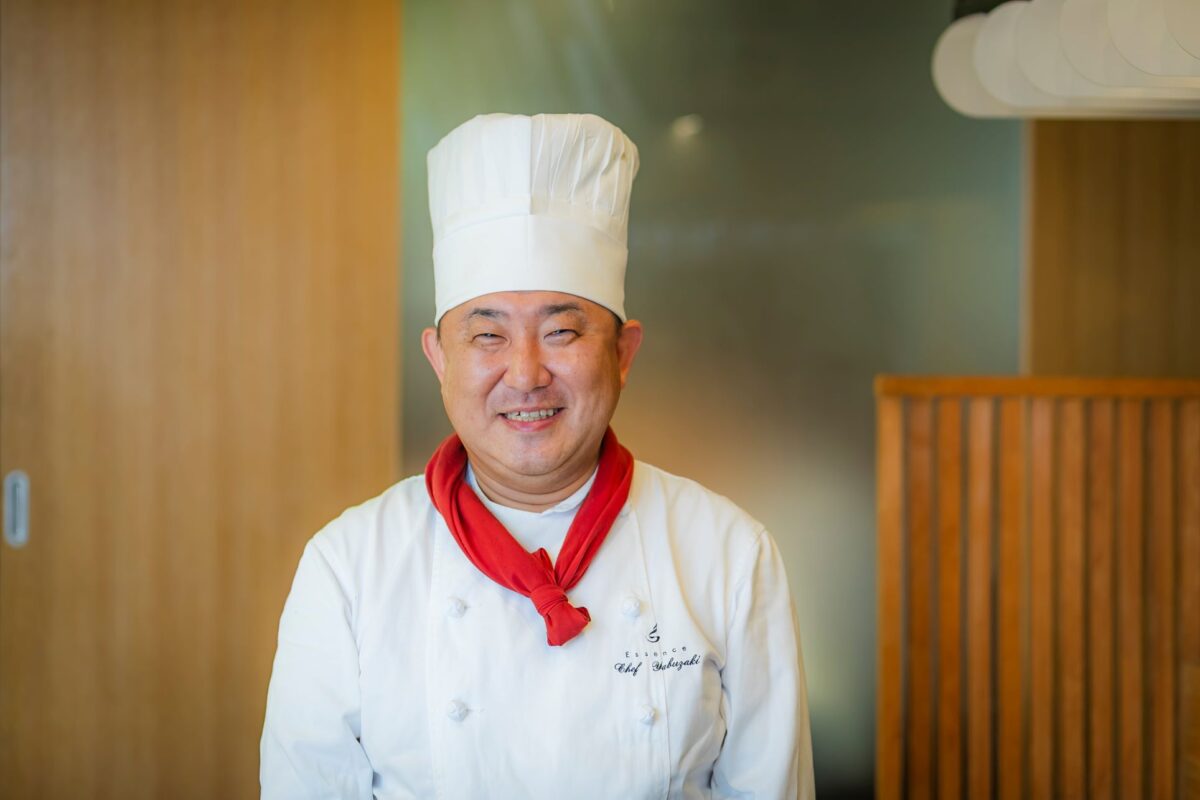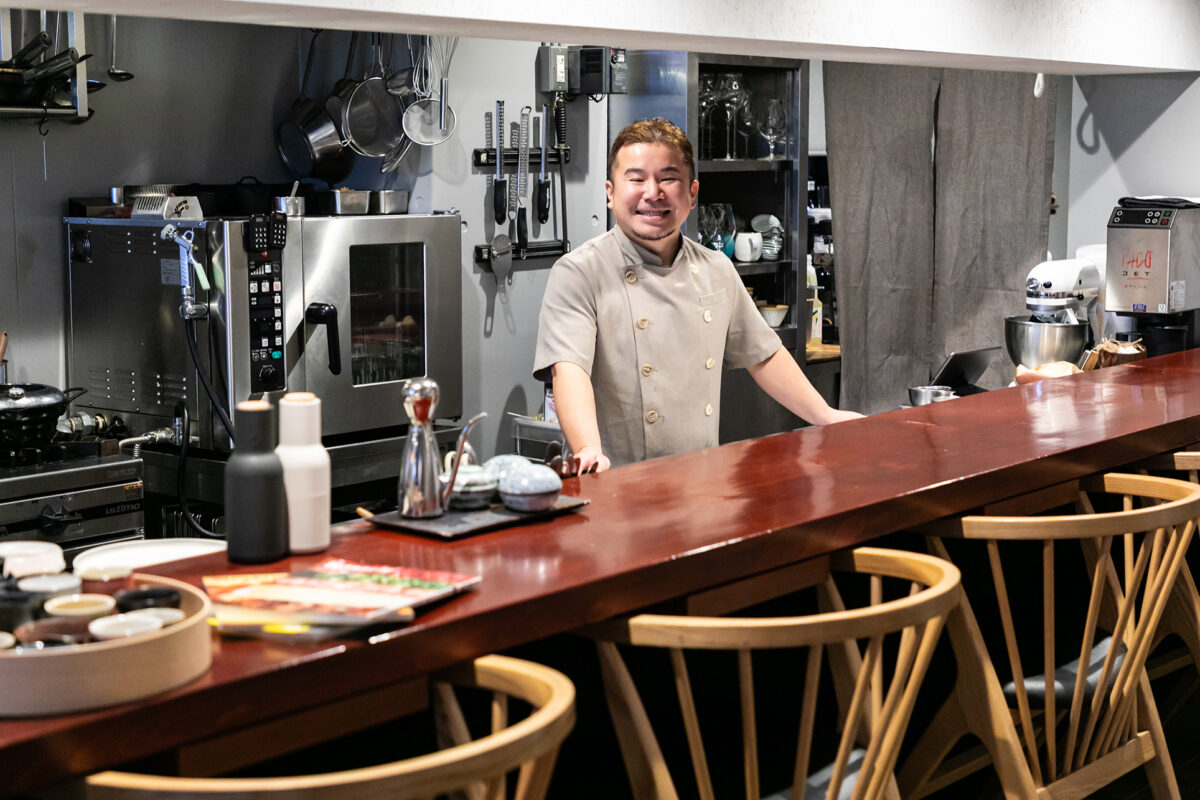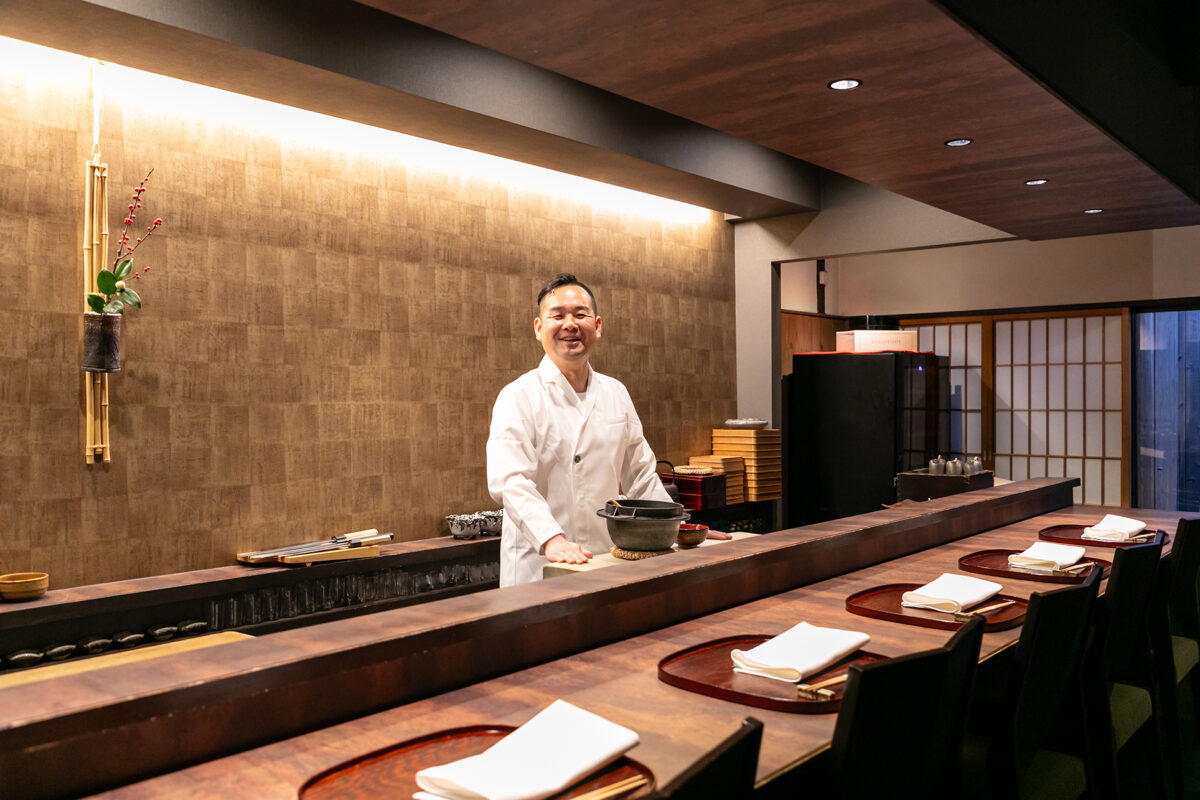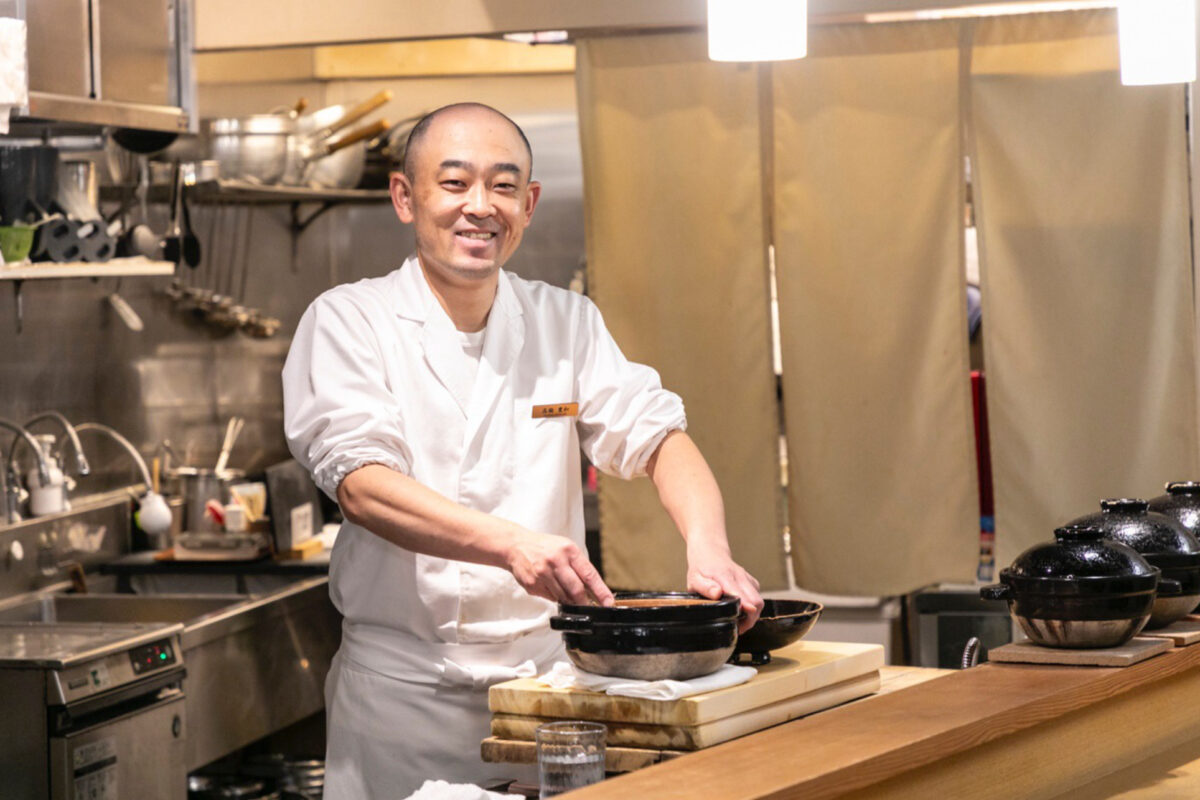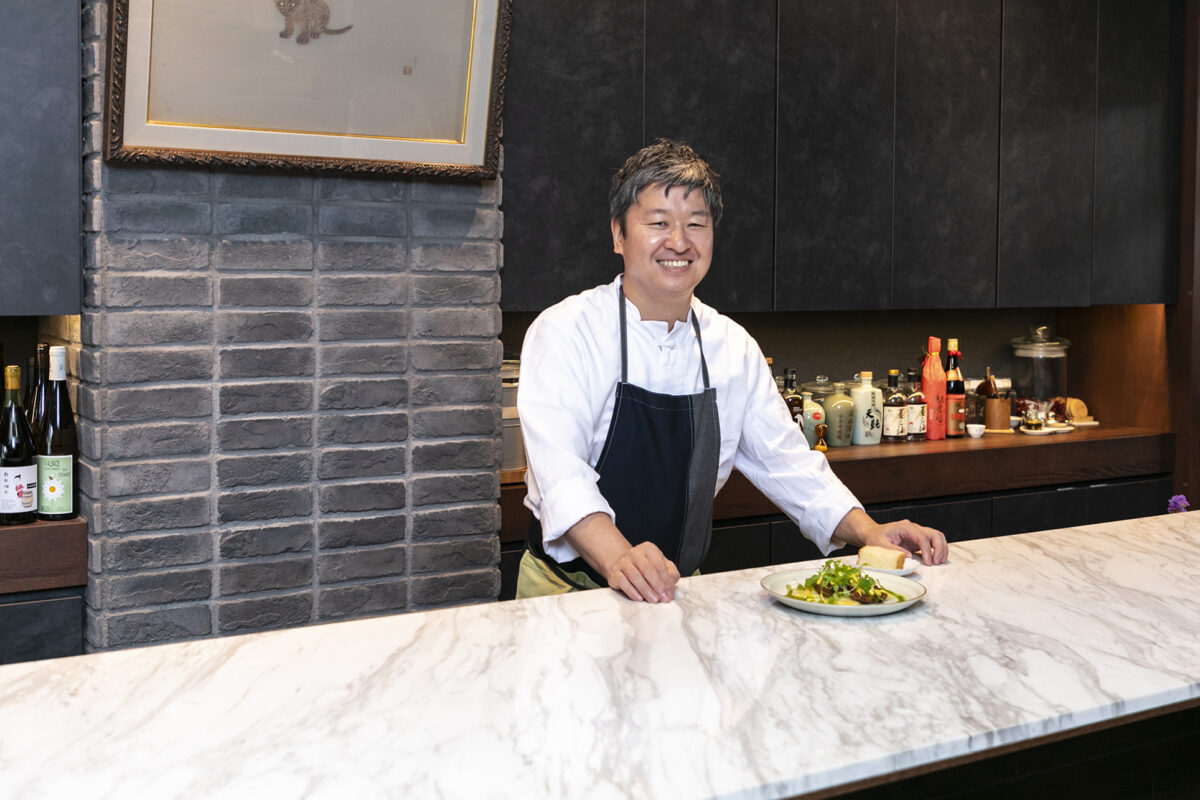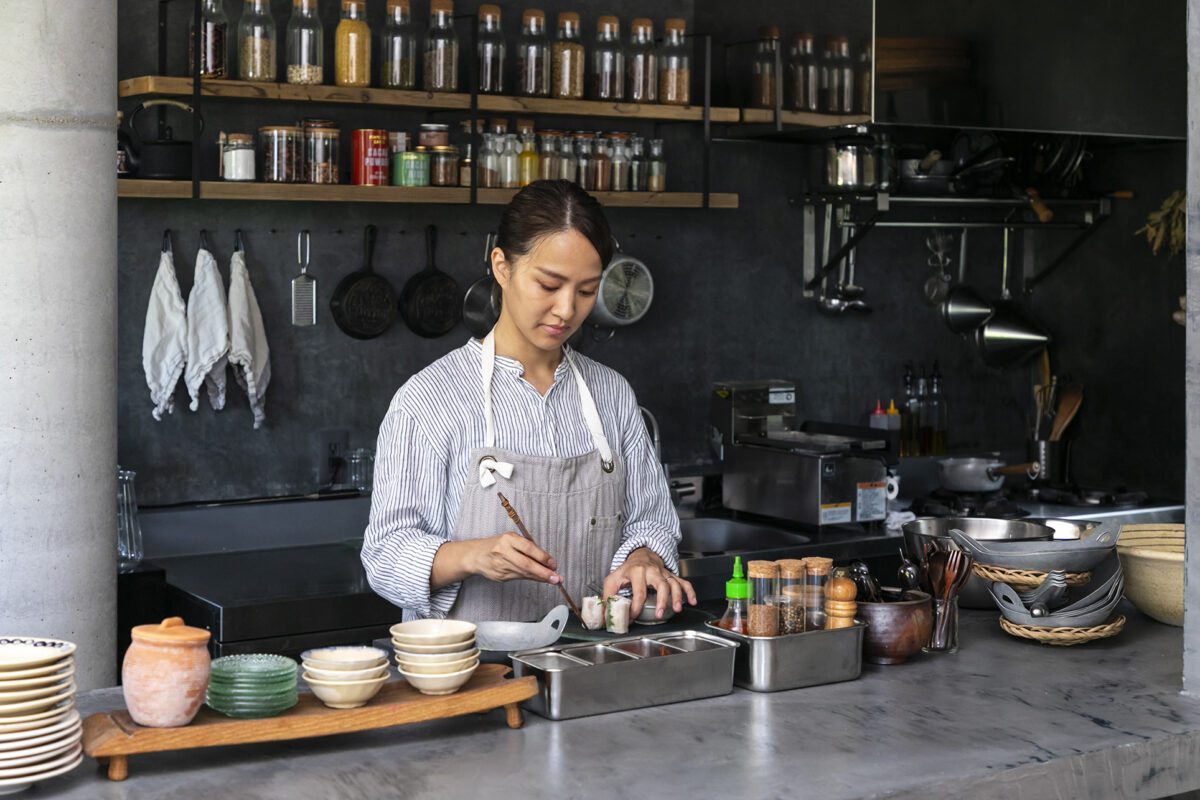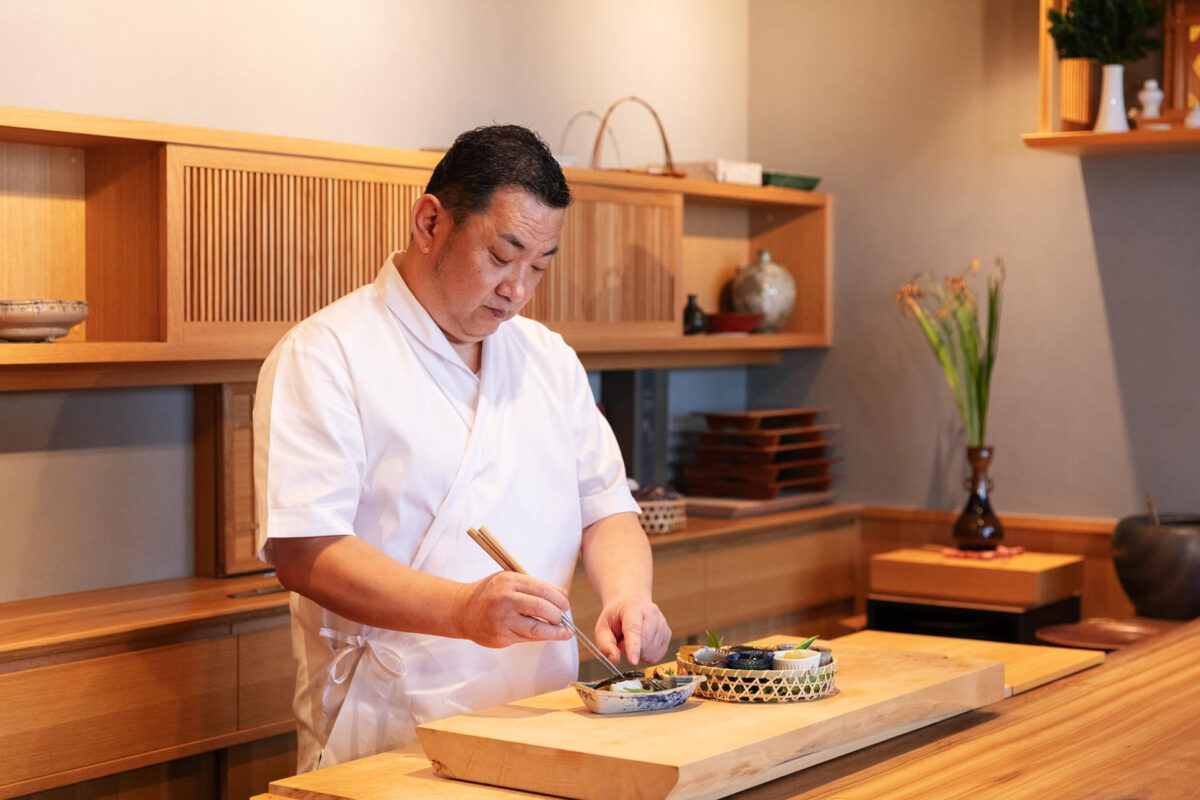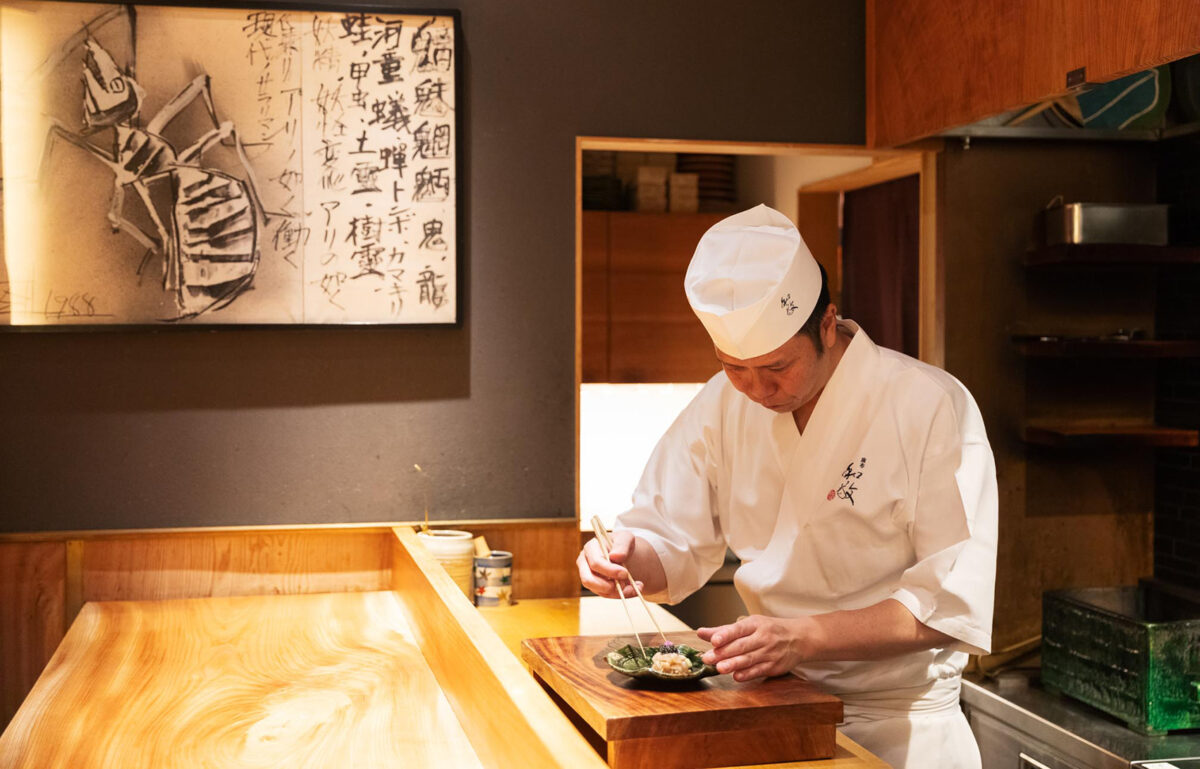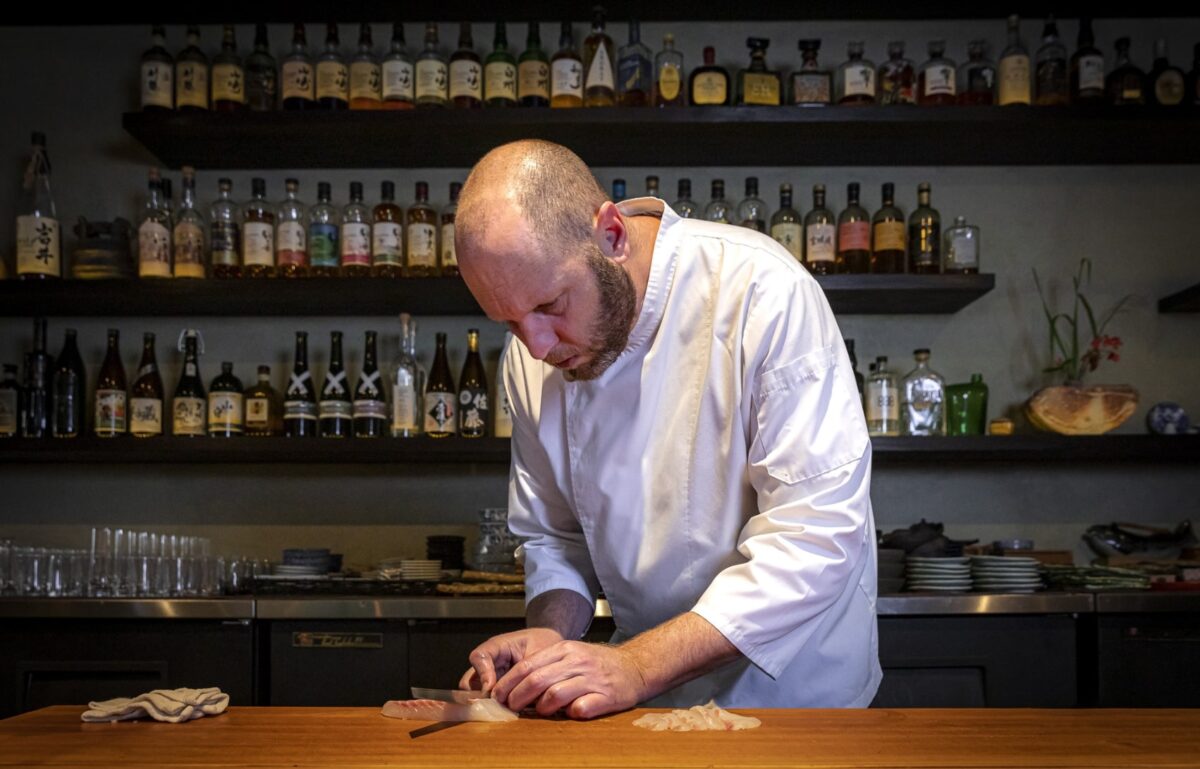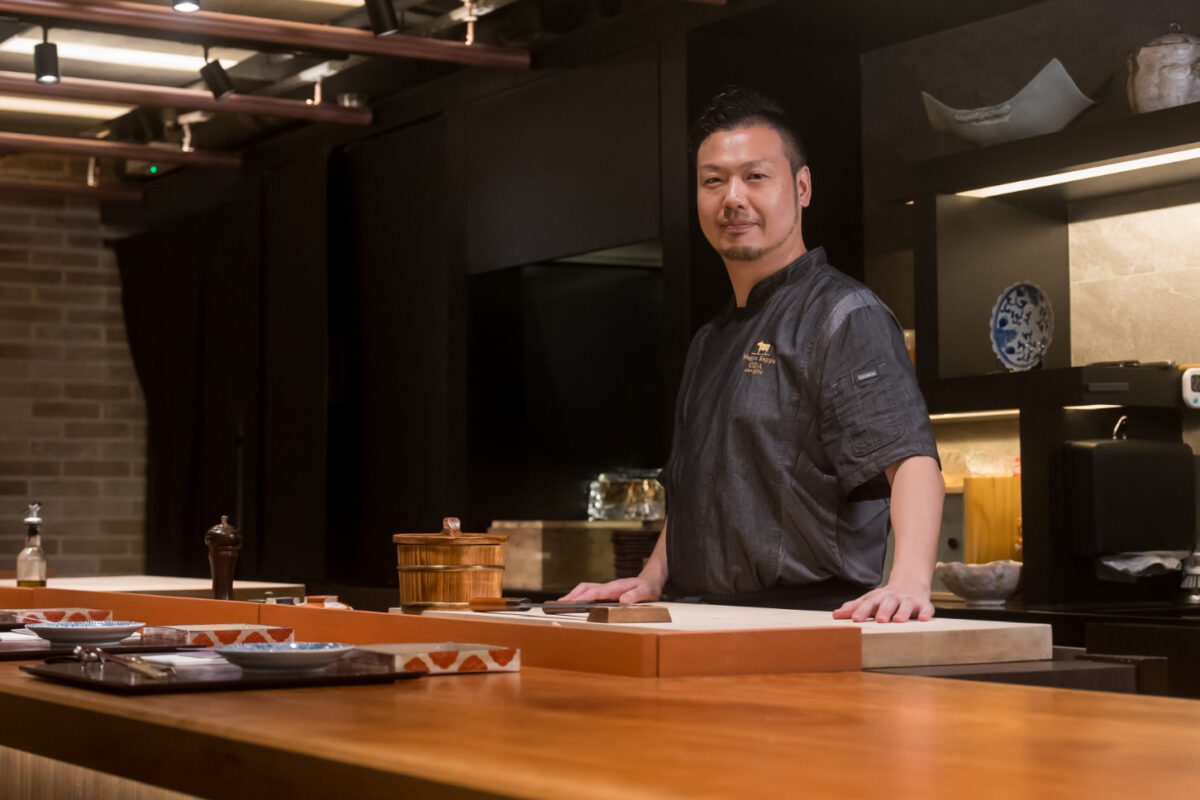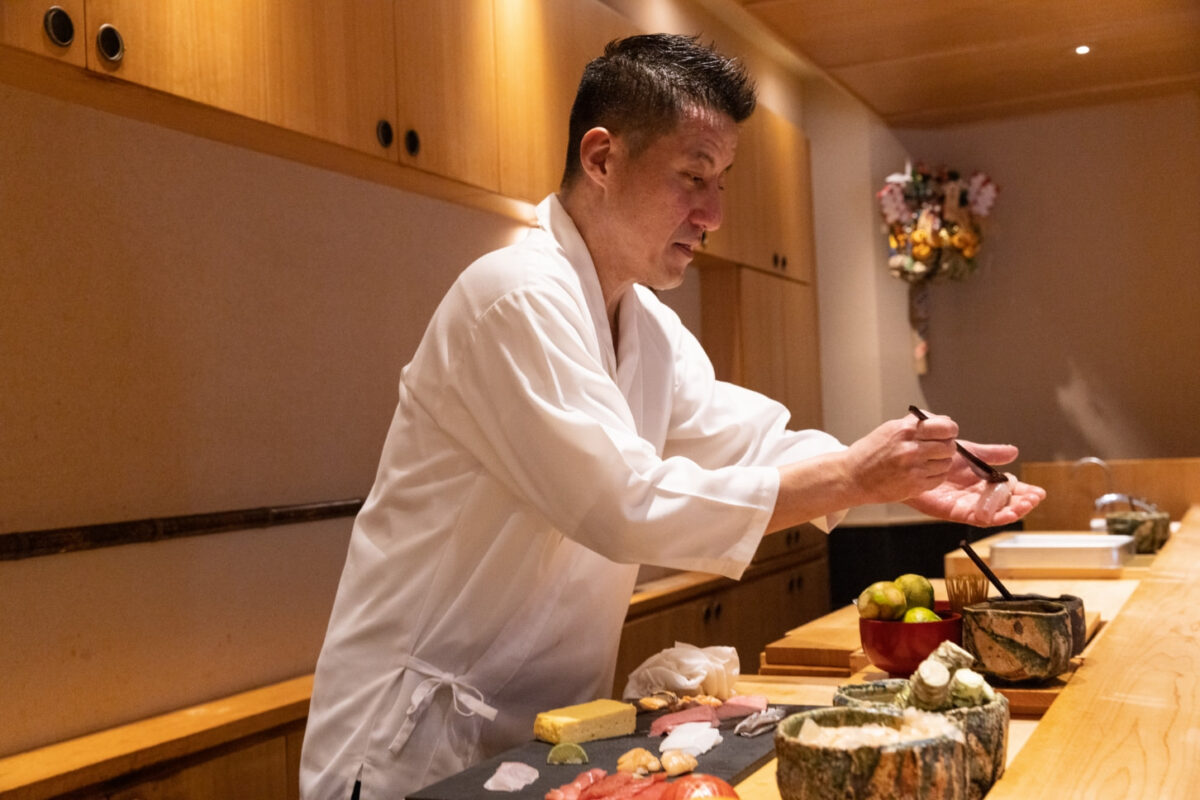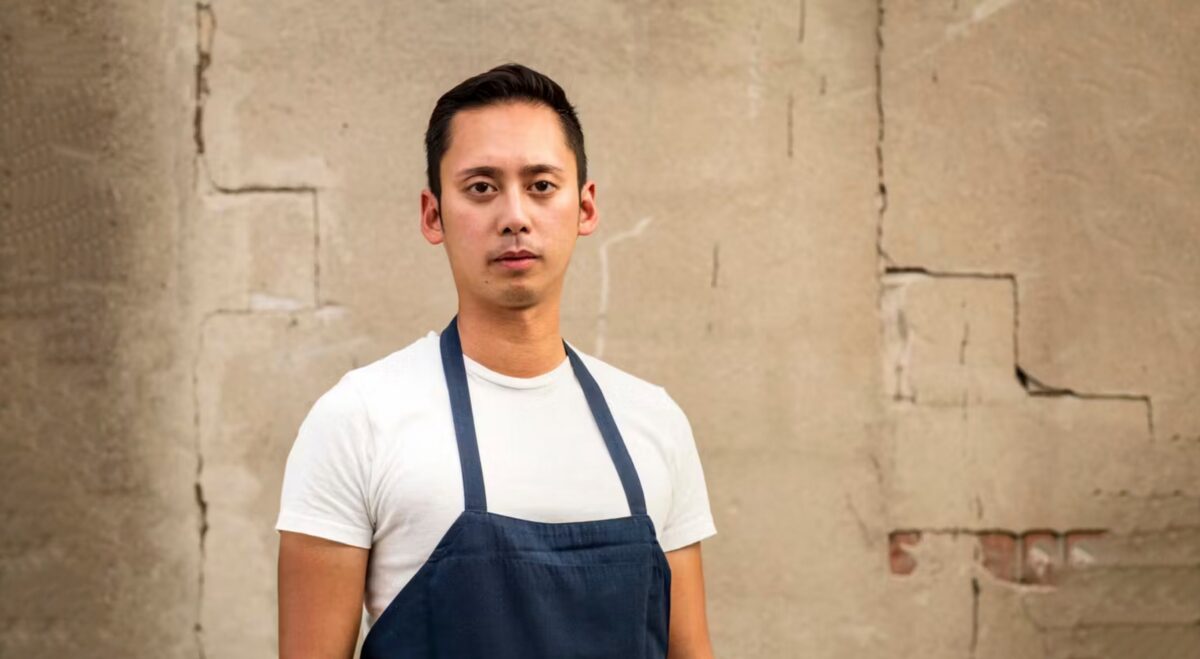DUGOUT
An omakase chef’s choice sushi course to be enjoyed to the fullest at a private counter
Sushi Bullpen is a lively restaurant with a bar-like atmosphere on the Nakahara Kaido national highway that runs through Musashi-Koyama. The shop next to it may look like just a juice stand, but it’s not. This is actually DUGOUT, the newest member in the family of restaurants where Yuta Kouno shows off his skills, along with the popular sushi restaurants Sushi Rinda and Sushi Bullpen. The six-seat counter encases a meticulously designed kitchen optimized for the chef’s workflow. The restaurant operates on a private reservation basis and the show starts when all guests are seated. It offers an omakase course of presenting appetizers through to sushi, all specially curated for that night. The course starts not with an appetizer, but with nigiri-zushi. Among the many fresh sushi toppings, the Chef Kouno introduces himself with two pieces of carefully crafted and impactful nigiri: a melt-in-your-mouth chutoro (medium-fatty tuna), prized for its high-quality marbling, and a seasonal seafood selection brimming with umami. From there, the experience unfolds with a combination of dishes such as chawan-mushi (steamed egg custard), sashimi, and a small hot pot as well as more nigiri-zushi. Requests are meet with improvisational flair, leading seamlessly to a finale of tamagoyaki (omelet), arajiru (fishbone soup), and mikan (mandarin orange) juice sourced from his family’s farm. The entire course blends his craftsmanship and entertainment skills to keep the guests captivated. The counter is likened to a stage, and the production draws out the diners’ anticipation and surprise of “what’s coming next?”, capturing their hearts and bellies.
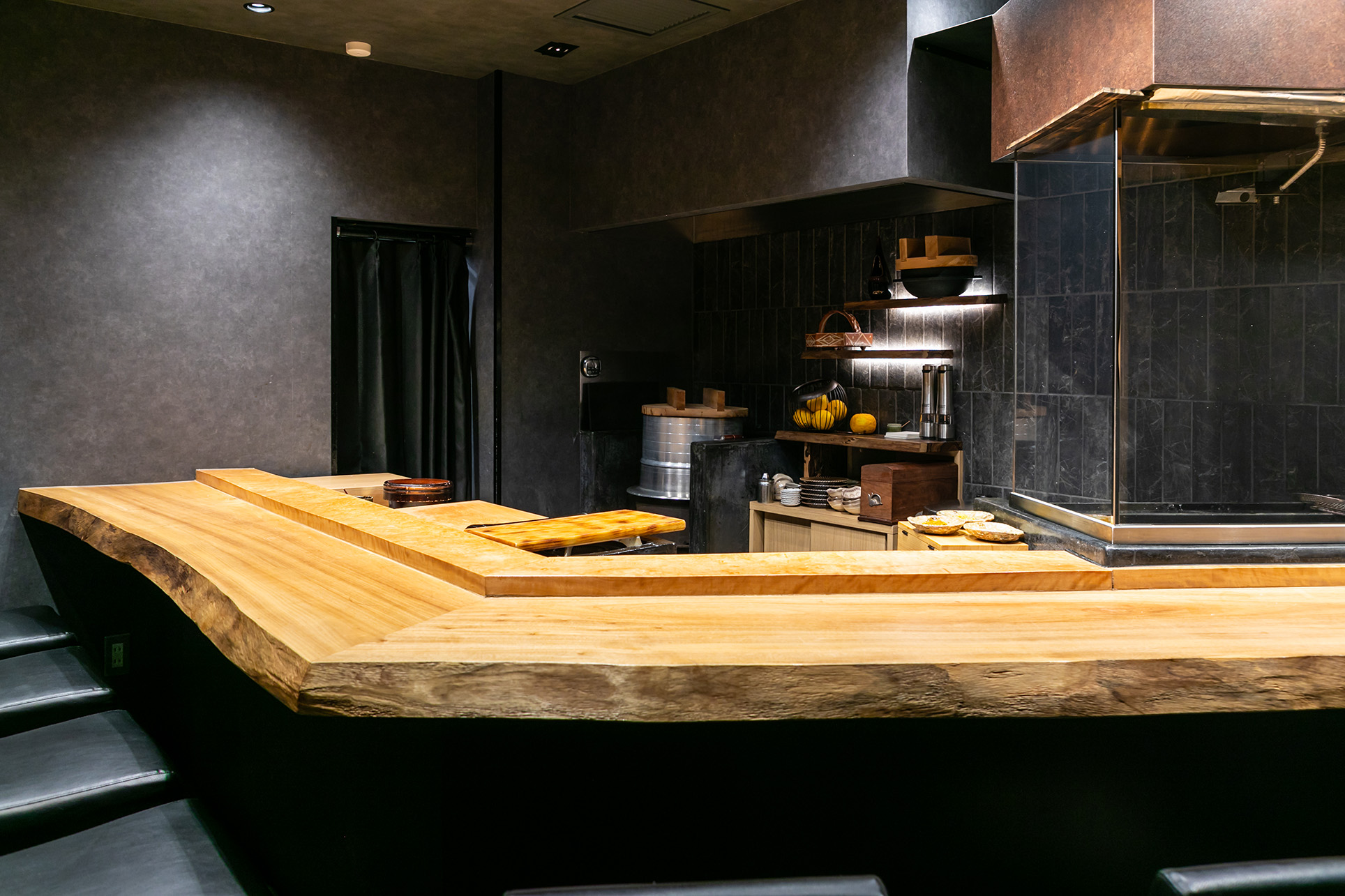
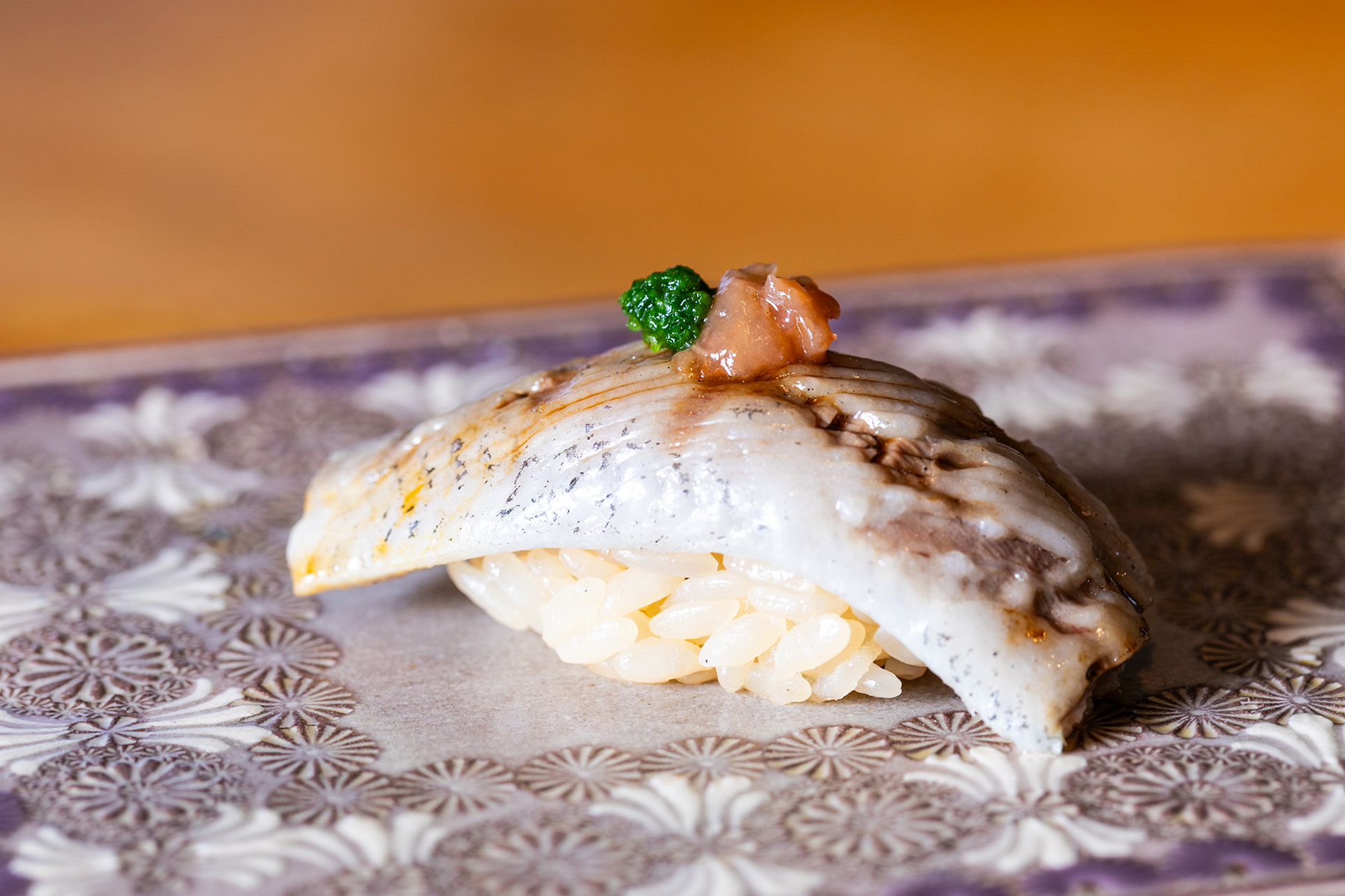
Rolling out multiple branches in pursuit of his own vision of a sushi chef
My family grows mikan in Uwajima City, Ehime Prefecture, on the west side of Shikoku. The sea stretched out right next to the orchard, and I grew up helping my parents with their business and then going fishing in the sea, or catching octopus on the way to school. I myself love the sea, and I chose the path of a sushi chef because I saw it as a profession where I could interact with a wide variety of fish. After graduating from high school, I apprenticed for three years in my hometown before heading to Tokyo. With a war chest of ¥300,000, I went around eating sushi at restaurants through the city, before knocking on the door of Matsue in Ebisu, which laid the foundation for where I am today. The reason I chose Matsue was because it has multiple branches, and at all of them, young craftsmen were working together in a friendly atmosphere. The head chef’s appearance, demeanor, and guidance had a cool and stylish quality that was different from the image I had of a sushi chef. I also had an ambition to build restaurants that would continue to run even if something were to happen to me. That’s why I strove to learn not only culinary techniques but also a flexible mindset and management skills that are not bound by convention.
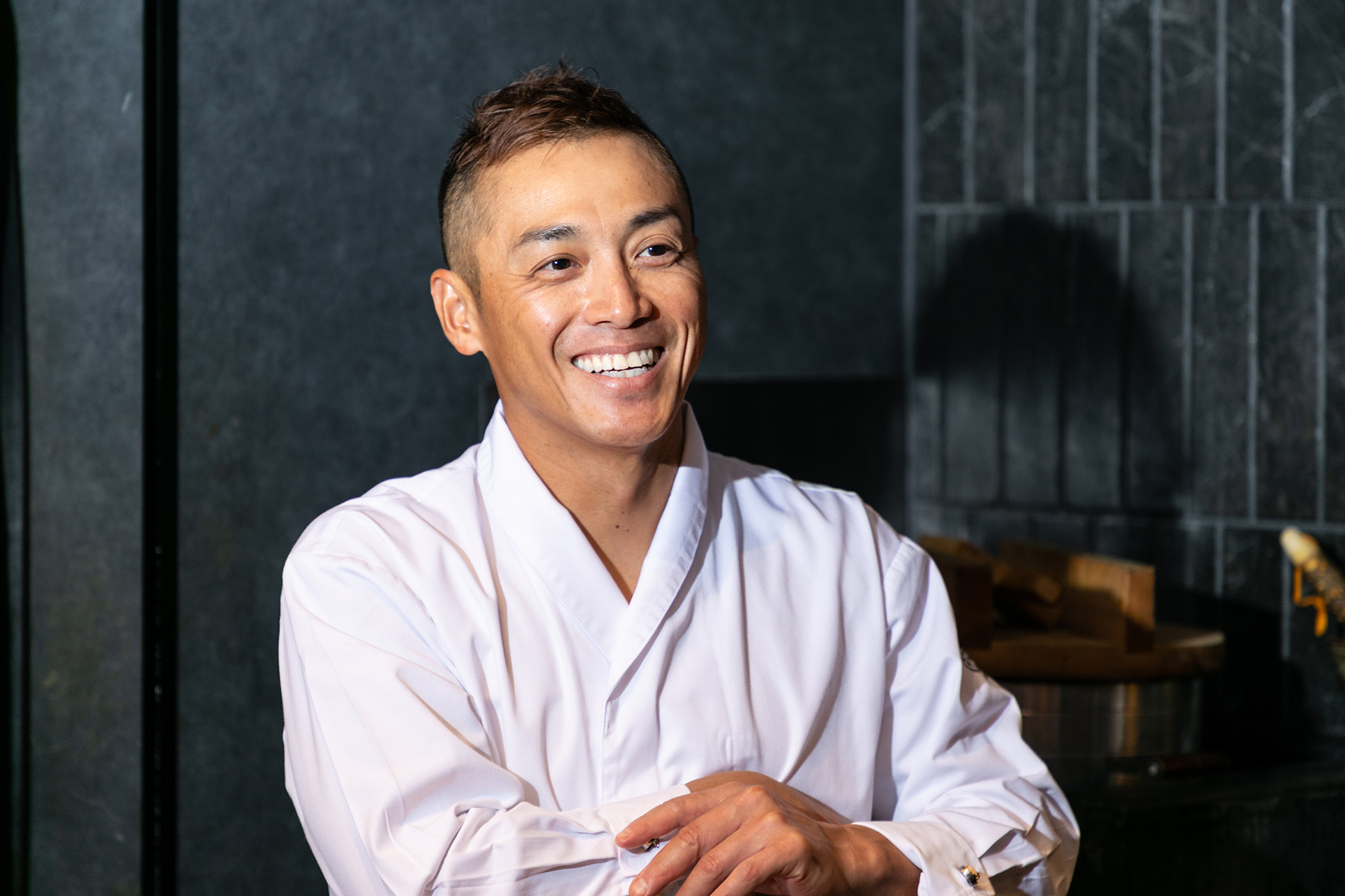
Sushi culture encountered in an overseas posting
The turning point in my journey as a sushi chef was when I was seconded to Sushi Matsue’s New York branch at the age of 25. There I saw for myself the kind of textures the diners outside of Japan tend to prefer. One example is salmon skin roll. Salmon skin is grilled until crispy, chopped, and then added to the shredded flesh to make a sushi roll creating a crunchy texture popular with guests. The fried senbei (rice crackers) in the recipe I introduced this time were also used in the same way. What also impressed me were the liberal use of spices and mayonnaise and the innovative sushi culture that you can’t experience as an apprentice in Japan. I also learned about ingredient management and storage as ingredients arrived from Japan twice a week. I think that the opportunity to learn abroad in this profession was invaluable.
After returning to Japan, I honed my skills again at the main branch before setting out on my own in 2014. Sushi Rinda was the first restaurant I opened. In the sushi industry, many years of apprenticeship are required before becoming a full-fledged chef. I’m the owner standing at the counter while also training young chefs and expanding the number of branches. In this sense, I want to use both my second restaurant Sushi Bullpen, and DUGOUT here, as gateways to success for young chefs and a place for them to gain real-world experience.
Of course, I take no short cuts in terms of the quality of the sushi and dishes served. I don’t play around much with the ingredients and keep it simple. Then, I add a new element of surprise to finish off the dishes. For example, the small seafood hot pot, which is one of the restaurant’s signature dishes, was inspired by the Spanish dish ajillo, and made by substituting dashi (broth) for olive oil as its base. I do my best to create dishes that will win people’s hearts with little touches, such as adding Chinese-style scorched rice at the end.
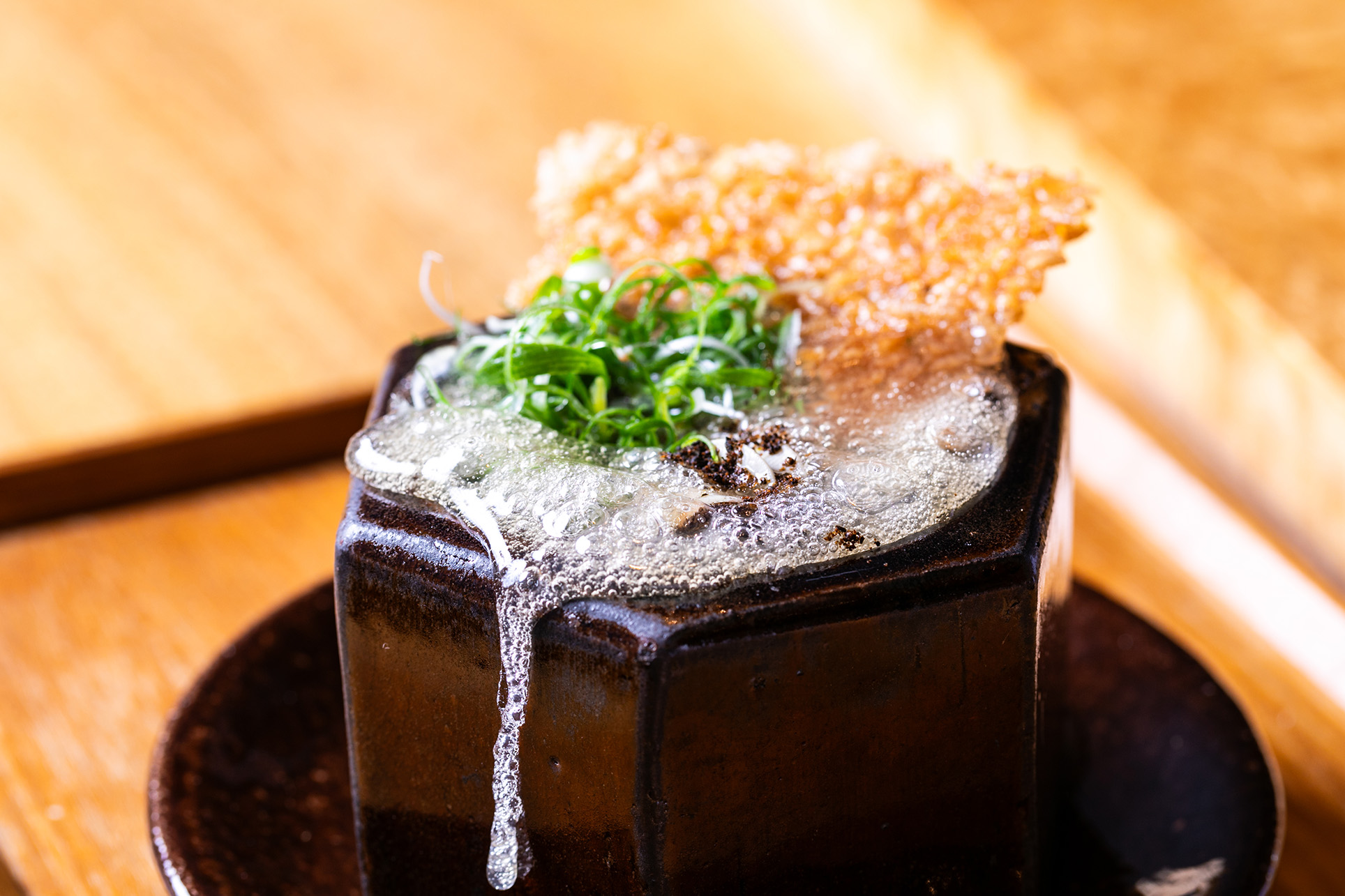
The role of Japanese rice in restaurants serving Japanese cuisine and sushi
Though they are both forms of cuisine from the same country, I think the characteristics of the rice required differ between Japanese cuisine and sushi restaurants. Japanese restaurants that serve freshly cooked white rice or seasoned rice cooked with mixed ingredients in clay pots use rice that is soft and chewy when cooked, and that allows you to fully appreciate its sweetness. To bring out the umami of the rice, they take plenty of time to soak the rice, and cook it to a slightly softer texture, and the like, and emphasize the aroma and deliciousness of freshly cooked rice.
In contrast, sushi restaurants usually serve rice as vinegared rice. Good rice is rice that you can enjoy the lingering taste of a few grains left in your mouth after eating the fish (topping) and rice together. It can’t be too chewy. To remove the moisture from the rice, I adjust the cooking and steaming times by taking longer than the process used at Japanese cuisine restaurants. I use a 7:3 blend of newly harvested and last season’s rice. This is a hack I use to maintain stable flavor profiles with rice that is different every year. Additionally, I can assess the quality of that year’s rice (such as the degree of breakage) by observing how much rice residue is washed away. That’s why I always taste and verify the rice we are considering sourcing every year.
In any event, what’s important is not the rice’s variety or brand, but how much experience we chefs have and how deliciously we can prepare it. Without looking inside the pot, the chef fine-tunes the cooking process based on the characteristics of the rice, its current condition, the type of pot, the way it boils, and how the heat is distributed. The question is how to ensure consistent quality. I think that is a skill of a Japanese chef, whether one works at a Japanese restaurant or a sushi bar.
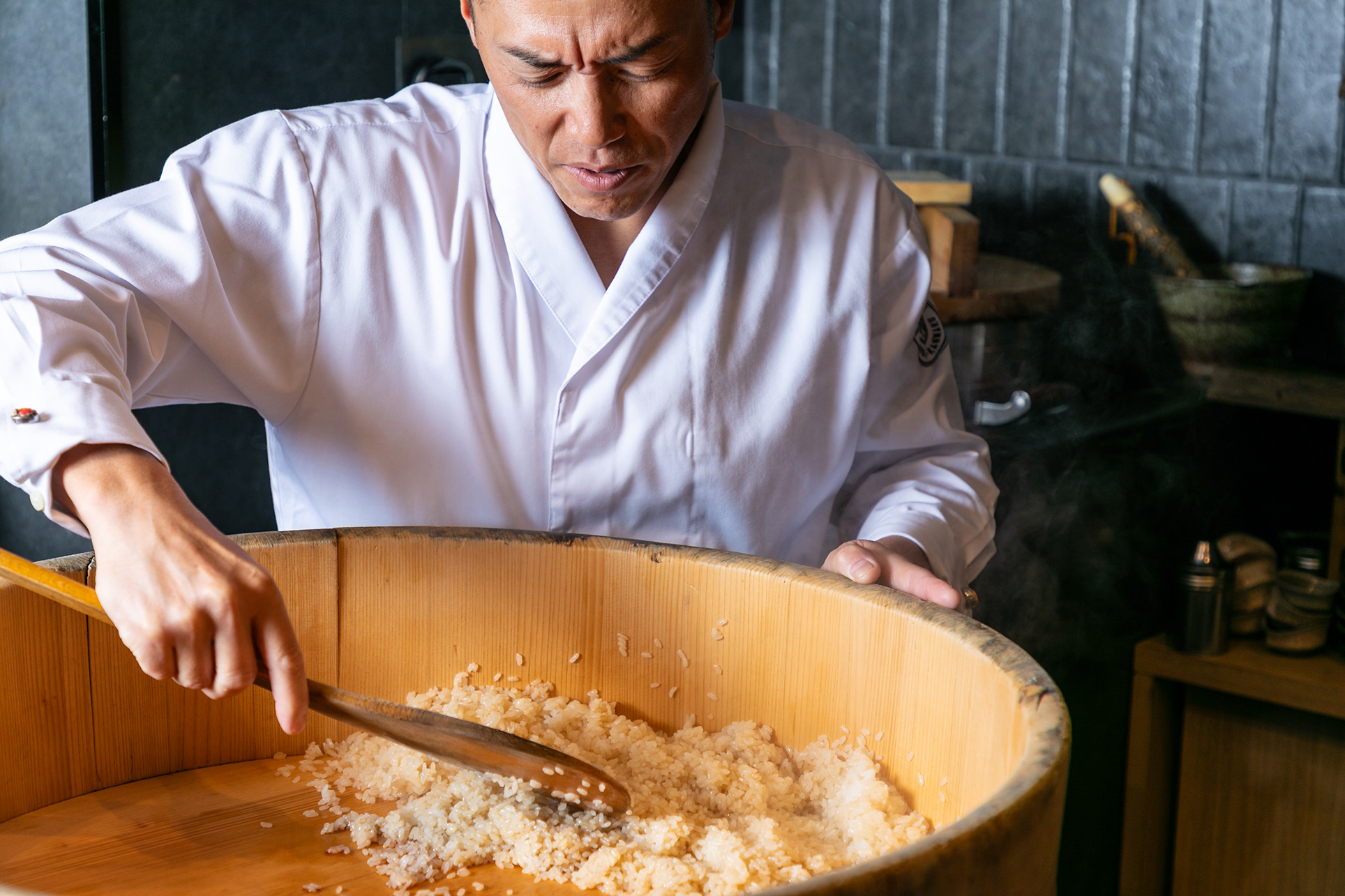
The intrinsic differences between rice grown in Japan and overseas
If I am being honest, at the New York branch, we used rice grown overseas rather than importing it from Japan. There’s no substitute for the sweet aroma of freshly cooked Japanese rice. Perhaps due to differences in the local water, I felt that foreign-grown rice had a distinct characteristic flavor. That said, it was more than adequate for use in sushi rice. I believe that rice grown outside Japan can be delicious.
Restaurant operators like me are able to use high-quality Japanese rice. Yet not all the Japanese rice I source is of the same quality every time. Rice is said to require more time and effort to cultivate than other crops. Of course the more time and effort one invests, the better the quality will be. And if you cut corners, the crop will reflect that too. I feel the key to deliciousness is to select from among the many varieties of Japanese rice, and to cook the rice in a way that brings out its individual characteristics, based on an assessment of the rice’s quality for that year. No matter how high-quality the rice is, if care is not taken when cooking it, the luster, aroma, or sweetness will not come out. How can we make it even more delicious without relying on the quality of the ingredients alone? That’s our job as chefs. As such, it is my daily battle. In that sense, I would like to continue to respect Japanese rice, which is Japan’s national treasure, while also elevating it to a culinary art form.
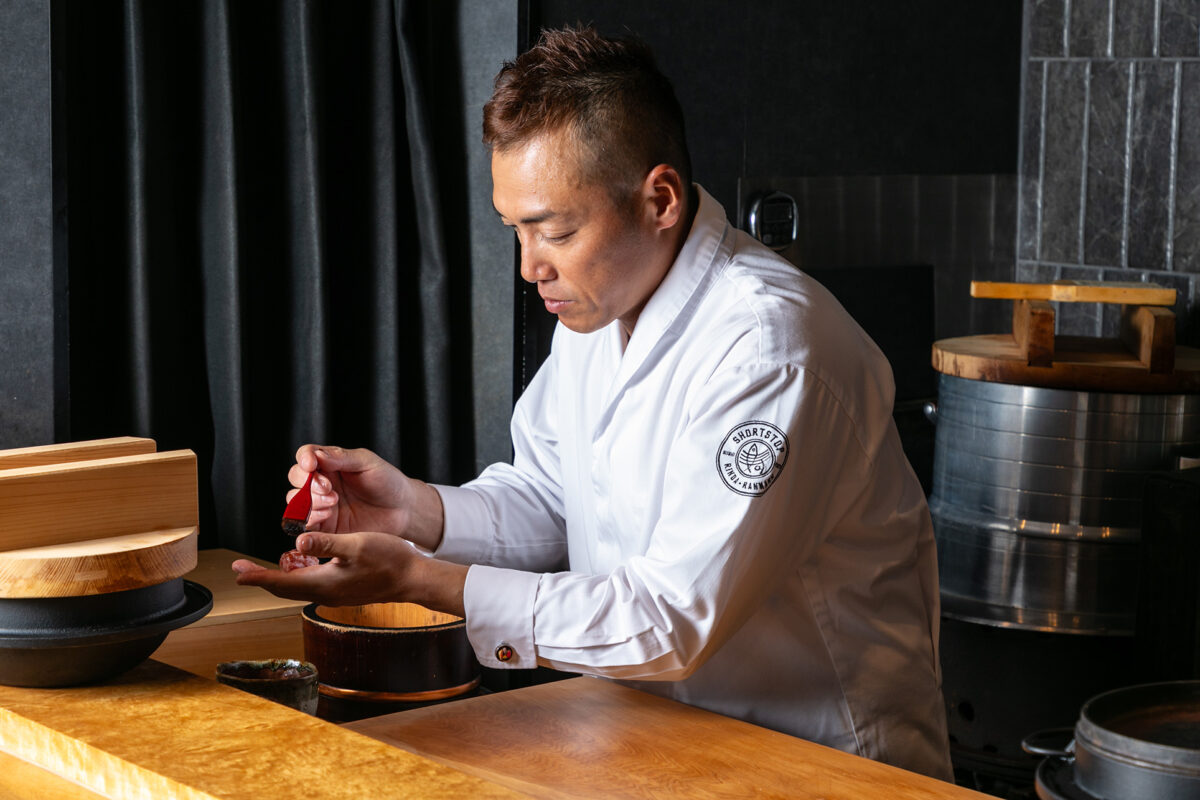
Enjoy Japanese rice as if you were making sushi in your mouth
The feeling that “white rice is the best!” is a uniquely Japanese sentiment, and I think that people overseas (depending on their food culture), especially in the West, don’t often get the opportunity to eat rice other than in sushi. Also, many people are more familiar with dishes that are cooked together with rice and other ingredients from the start, such as risotto, or with rice mixed in with the ingredients, rather than eating white rice and side dishes separately.
The Japanese way of eating, in which you take mouthfuls of rice and main dishes alternately and chew them, is called mouth seasoning. It’s like creating sushi in your mouth. You bring separate flavors together into a harmonious whole with each bite. So, if you don’t object to sushi, I’d like you to prepare some freshly cooked white rice and your favorite main dish (chicken, hamburger, fish and chips, or anything you like!) and mix them together in your mouth, either alternately or layered, and enjoy the taste. You’ll surely discover a new kind of deliciousness. My motto is “let’s make sushi in our mouths”. And once you’ve discovered the appeal of rice, please come and try the skills of Japanese sushi chefs using Japanese rice.
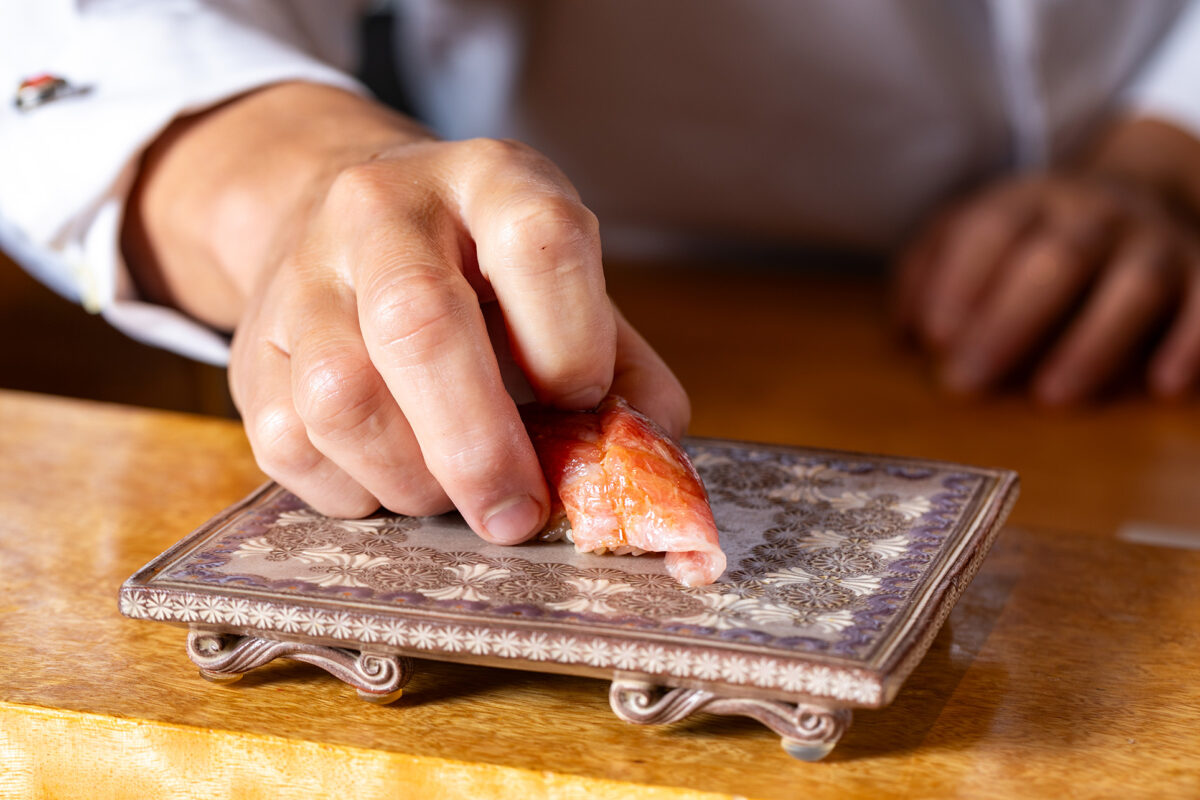
Recommended dish
Nigiri-zushi (served as part of a course) 握り寿司(コースの一品として提供)
The sushi rice is made by cooking white rice until slightly firm in a traditional broad-brimmed cooking pot with a touch of kombu (dried kelp) and nigari (bittern), then seasoned with red vinegar made from fermented sake lees for a deep, well-rounded flavor. This carefully crafted rice serves as the perfect foundation, embracing the rich umami of seasonal seafood. Chutoro is a regular item and cut into thin slices that melt evenly in the mouth, and then layered in three. You will lose yourself in this piece of sushi with its high-quality fat and the lingering flavor of the nikiri (soy sauce evaporated with sake and mirin) it is anointed with. The recommended dish of the day is iwashi (sardine) nigiri, lightly seared on the surface and served wrapped in toasted seaweed. Please savor the umami that unites in the light mouthfeel of the seaweed.
